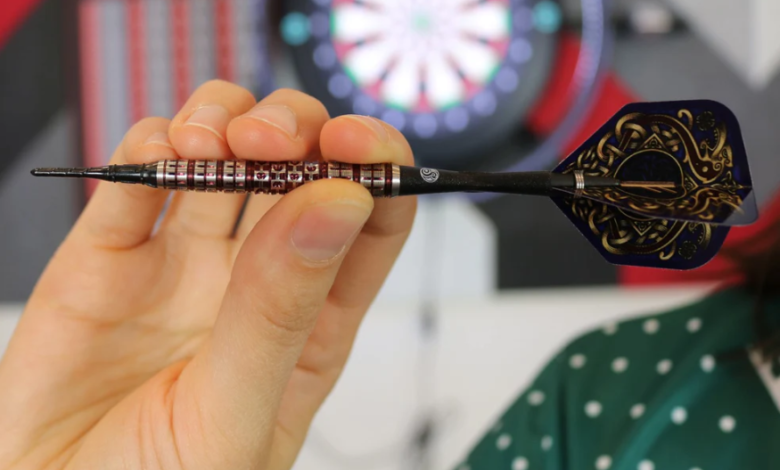How to Play 501 on an Electronic Dart Machine: Rules and Tips for Beginners

Learning how to play 501 on an electronic dart machine is a great way for beginners to experience one of the most popular and competitive dart games worldwide. The 501 format combines precision, strategy, and consistency, making it perfect for players who want to sharpen their skills while having fun. In this article, we’ll break down the rules, scoring system, and essential tips for playing 501 on an electronic dart machine, so you can start hitting higher scores and enjoy the thrill of the game like a pro.
Understanding the 501 Game Format
501 is a popular dart game that tests accuracy, strategy, and mental math. Each player starts with 501 points, and the goal is to reduce their score to exactly zero.
How the Game Works
Players take turns throwing three darts per turn (a “visit”). The points they score are subtracted from their total.
Example: If you score 100 points, your total goes from 501 down to 401.
Double Out Rule
To win, your last dart must land on a double (outer ring) or the inner bullseye (50 points). If you reach zero without hitting a double, it’s a bust, and your score goes back to what it was at the start of that turn.
Strategy
Try to hit high-scoring areas like Triple 20 to reduce your total quickly. When your score gets low, plan checkout combinations to finish exactly on zero with a double.
Example checkouts:
- 170: T20 – T20 – Bull
- 115: T20 – 15 – D20
- 32: D16
Busts
A bust happens when a player scores too many points or is left with 1, which can’t be finished on a double. When this happens, the turn doesn’t count, and the score goes back to what it was before that turn.
Setting Up the Game on an Electronic Dart Machine
This guide explains how to install the dart machine, set it up, and start a game, making it easy to use in bars, hotels, or clubhouses.
Pre-Setup (Installation & Positioning)
- Mount the machine: Bull’s-eye should be about 1.73 m (5 ft 8 in) above the floor.
- Mark the throw line (oche): Usually ~2.44 m (8 ft) from the board for soft-tip machines, or follow the manufacturer’s instructions.
- Secure the machine: Ensure it’s stable, well-lit, vibration-free, and has enough clearance.
- Power on the machine: Plug in or insert batteries, check that it boots and self-tests correctly.
Setting Up a Game
- Select Game Mode: Press the “GAME” button to pick a mode, such as 301, 501, or Cricket. Some machines show codes like “G01” for Countdown games.
- Configure Game Options: For games like 301 or 501, you can pick rules such as Double In, Double Out, or Master Out. For other games like Cricket or Round the Clock, you can adjust the difficulty or number of rounds.
- Select Number of Players: Press the “PLAYER” button to choose how many players or teams will play. Some machines also let you play solo or against a computer opponent.
- Press START: Press the START button to begin. The machine will indicate who goes first and automatically keep track of scores.
Tips & Best Practices
- Use the correct dart type (soft-tip for electronic boards).
- Missed or bounced darts usually score zero.
- Maintain the board: clean regularly, remove broken tips, check sensors.
- For venues, train staff on starting games, changing modes, and assisting players.
Rules of 501
501 is the most popular and widely played dart game, used in both professional and casual settings. The main goal is simple: be the first player to reduce your score from 501 to exactly zero, finishing on a double.
1. Starting the Game
Two players or teams take turns. Each throws one dart at the bullseye to decide who goes first, then takes turns throwing three darts per visit.
2. Scoring
Each dart scores based on where it lands:
- Single (main area) = face value of the number.
- Double (outer ring) = twice the number’s value.
- Triple (inner ring) = three times the number’s value.
- Outer bull = 25 points.
- Inner bull (bullseye) = 50 points.
For example, Triple 20 = 60 points, and the highest possible score in one turn (three triple 20s) is 180, known as a “ton-eighty.”
3. Double-Out Rule
To win, a player must reach exactly zero and finish on a double (outer ring) or the bullseye. If zero is reached without a double, it’s a bust and the turn doesn’t count.
4. Bust Rule
A bust occurs if:
- You score more points than you have remaining.
- You leave yourself with 1 point, which can’t be finished on a double.
When this happens, your score reverts to what it was before that turn began, and your turn ends immediately.
5. Winning the Game
The first player or team to reach zero with a valid double-out wins the round (called a leg). Matches are usually played in multiple legs or sets, like best of 5 legs or best of 3 sets.
6. Common Variations
- 301: A shorter version, great for faster games.
- 701 or 1001: Longer versions, often used for teams or tournaments.
- Double-In: Players must first hit a double to start scoring, adding an extra challenge.
In 501 darts, players combine precision, quick math, and strategy to reduce their score to zero while finishing on a double. The mix of skill, pressure, and planning makes 501 the standard format for competitive darts worldwide.
See also: Gamertag Ideas: Creative Names for Gamers
Strategies and Tips for Beginners
Starting in 501 darts can feel challenging, but with a mix of accuracy, planning, and practice, you can quickly improve your game. Here are some simple strategies to help you get started:
- Aim for High Scores
Target the Triple 20 for the highest points (60) to reduce your score quickly. If it’s difficult, aim for Single 20 or Triple 19 for safer scoring.
- Plan Your Finishes: Since you must end the game on a double, learn common “checkout” combinations like T20–T20–Bull (170) or T20–15–D20 (115). Knowing these patterns helps you stay calm and focused when closing out a leg.
- Practice Regularly: Try drills such as Around the Clock (hitting numbers 1–20 in order) or Double Practice (working through doubles like 20–10–5 or 16–8–4–2–1). These build accuracy and confidence.
- Avoid Common Mistakes: Don’t forget to plan for a double-out, and avoid “busting” by scoring too many points or leaving yourself on 1. Smart score management is key to consistency.
With regular practice and careful planning, beginners can improve their focus and accuracy to get better at 501 darts.
Advantages of Playing 501 on an Electronic Dart Machine
- Automatic Scoring: The machine tracks every dart and updates scores instantly, eliminating manual counting and disputes for smooth, accurate gameplay.
- Builds Strategy and Focus: “01” games like 501 help players develop planning, score management, and strategic thinking skills.
- Perfect for Social Play: 501 is one of the most popular dart formats worldwide. It’s ideal for group games in pubs, clubs, or home setups, encouraging friendly competition and interaction.
- Game Variety and Flexibility: Electronic dart machines offer 501 plus many other fun variations, letting players switch things up while still practicing core dart skills.
- Great for All Skill Levels: Automatic scoring and clear visuals make the game easy for beginners, while experienced players can focus on improving accuracy and strategy.




